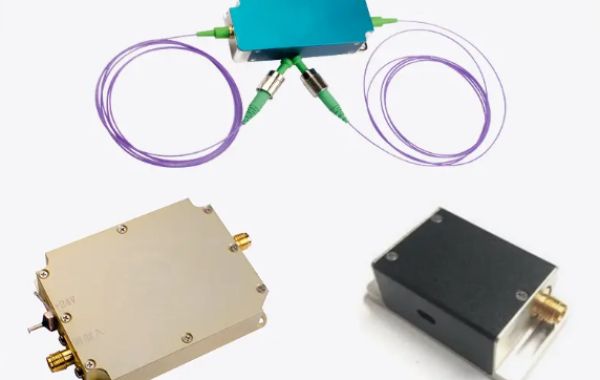The efficiency of an Acousto-Optic Frequency Shifter (AOFS) refers to the fraction of the incident optical power that is diffracted into the desired frequency-shifted order, typically the first order. Several factors influence AOFS efficiency:
- Acousto-Optic Material: Different materials exhibit varying degrees of acousto-optic coupling strength. Materials with higher acousto-optic figures of merit generally offer higher diffraction efficiencies.
- Acoustic Power: The intensity of the acoustic wave within the crystal directly impacts diffraction efficiency. Higher acoustic powers generally lead to higher efficiencies, up to a point where nonlinear effects or material damage may occur.
- Optical Wavelength:The efficiency of an AOFS can vary with the wavelength of the incident light.
- Bragg Angle:The diffraction efficiency is maximized when the incident light beam satisfies the Bragg condition, which relates the wavelength of light, the acoustic wavelength, and the angle of incidence.
- AOFS Design:Factors such as the geometry of the acoustic wave interaction region and the quality of the acoustic wavefronts can also affect efficiency.








